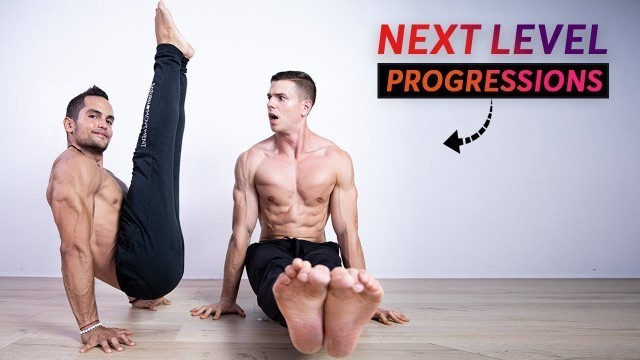

'Follow FitnessFAQs: • FitnessFAQs WO Programs: https://fitnessfaqs.tv • YT Channel: https://www.youtube.com/user/FitnessFAQs • Instagram: https://www.instagram.com/fitnessfaqs/ • Facebook: https://www.facebook.com/FitnessFAQs/ ___________________________________________________________________________________________________ What is up guys!? After a few months fully dedicated to our SM Online Academy and beloved #SMFAM, we are back! What you are about to watch is a tutorial to progress your L-Sit into a V-Sit. We\'ll highlight the most common areas that need to be worked on in order to achieve this movement. ___________________________________________________________________________________________________ When you understand the principles and methods that allow us to spot our areas of weakness, you can work efficiently towards them, then you will be able to achieve the skills you desire. Both the L-sit and V-sit require hip flexor strength, hamstring flexibility to not restrict the range of motion, tricep strength, and finally lat/scapular strength. Your main hip flexors consist of your iliopsoas (psoas major and iliacus) and rectus femoris. These muscles work to perform hip flexion, or in our case bringing the legs closer to your chest. Compression strength works with a combination of hip flexors and abdominals to bring both the body and legs closer together. Opposite of hip flexion is hip extension. The hamstrings work to perform hip extension along with knee flexion. When our hamstrings are tight or not flexible, this can restrict our hip flexion. Even though you may have good hip flexor strength, poor hamstring flexibility may prevent you from compressing. The opposite can also be true if you have great hamstring flexibility but lack hip flexor strength this will prevent you from compressing. In this video, we focus on creating hamstring flexibility and hip flexor strength. These can be challenging areas where you may have different levels of both or excel in only one of these areas. Whether you lack flexibility or strength, by discovering your weaknesses you will better be able to focus your training in an efficient and productive way. We can work our hamstring flexibility through utilizing a PNF (proprioceptive Neuromuscular Facilitation) technique that works to desensitize our nervous system from performing an autonomic contraction. When the muscles lengthen beyond a comfortable range, Golgi tendons located in the muscles respond by producing a contraction preventing the muscle from lengthening and protects the muscles from potential damage. Gaining flexibility occurs when we relax our nervous system to allow for decreased sensitivity of the muscle spindles. Next, we work our hip flexor strength by moving through different compression patterns. The first movements called pike compression works by bringing the legs to the trunk. The next movement works by sliding the feet back for our trunk to meet our legs. When working compression, there are two ways our bodies can compress: Our legs meet our trunk or our trunk meets our legs. This is dependent on the arthrokinematics or the joint articulation that occurs during the movement. Find which area may be preventing you from achieving the V-Sit skill and focus more on that area but don’t forget to work the other areas as well so you can advance from the L-Sit to V-Sit Skill! _________________________________________________________________________________________________
Tags: calisthenics , l-sit , l sit , v-sit , fitness faq , fitnessfaqs , v sit , vsit , gabo saturno , saturnomovement , saturno movement , l sit hold , lsit to vsit , from l-sit to v-sit , how to get the l-sit , how to get the v-sit , how to do the l-sit , v sit progression , l sit progression , v sit tutorial , v sit hold , l sit tutorial , l sit workout , v sits , how to v sit , how to l sit , l sit to v sit , how to do l sit , l sit to hand , l-sit progression , manna calisthenics , calisthenics vs yoga
See also:




comments